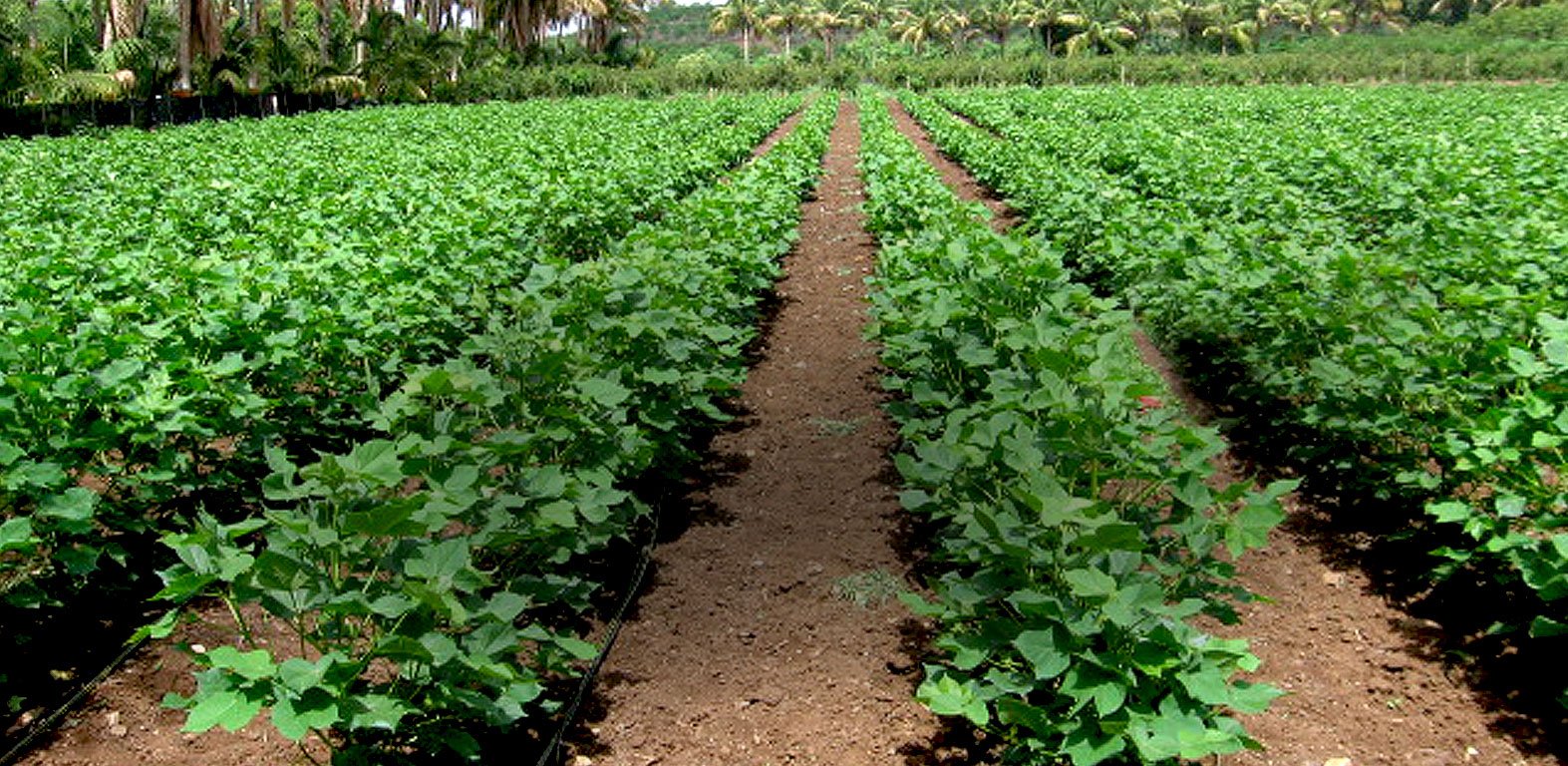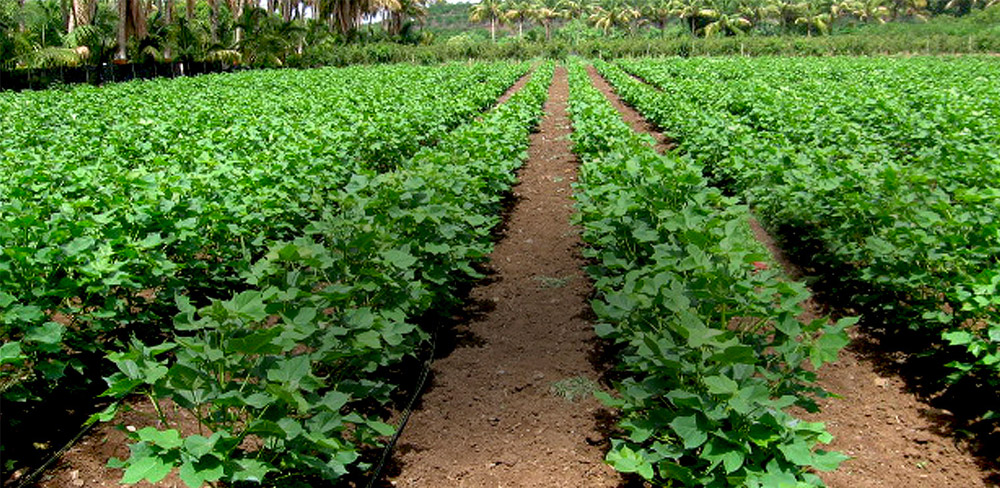Welcome to Jain Irrigation Systems Ltd.

Blog at Jains - HOW MUCH WATER DOES MY CROP NEED? Part 3. Cotton
Cotton is one of the major commercial crop of India.

India is growing cotton and manufacturing yarn and cloth from ancient times and has been an important exporter of cotton since when trading among countries started. Cotton production requires irrigation.
If water application method is precise and regular, an average of 4 mm is sufficient for cotton. This precision is achieved by adopting quality drip system. If drip is utilized properly, precision irrigation can result up to 2.4 kg lint/acre/ mm water used. i.e 120 days irrigation with average 4 mm daily will give about a ton lint per acre, when basal manuring and fertigation are followed strictly as per schedule and an IPM schedule is adopted for pest control.
Measure or estimate water use by the cotton crop is becoming a necessity now as the water availability is shrinking. Growers are also looking for opportunities to improve water productivity, by conserving water or reducing its consumption. At this point one started asking "How much water does my crop need ?
Where does all the water go after one irrigates a crop field? Water moves out of the field in 7 different ways after an irrigation that floods the field: 1.Direct evaporation from the water surface, 2. Drift of water away from the field due to wind, 3. Transpiration through the body of the crop plant (Mainly thru leaves), 4. Evaporation from the wet ground exposed to the atmosphere, 5. Run off of water from the field, 6. Infiltration to lower soil strata and 7. Deep percolation to far deep soil profile.
Among these, the essential components of crop water use are only two: transpiration and soil surface evaporation. Hence water use by crop is referred to as ETP, Evapotranspiration. As the crop grows the surface evaporation gets reduced and when the soil surface is fully covered by the canopy (leaf and leaf bearing branches of the crop) there is only one dominant component of crop water use: Transpiration.
In precision Irrigation the water given should only be equivalent to ETP. The goal of perfect irrigation is to reduce the second component of water loss, surface evaporation. In conventional irrigation major part of water loss are in fact the rest of the 7 listed above.
When a farmer asks the question, HOW MUCH DOES MY CROP NEED? The answer is the ETP (evaporation plus transpiration). Accordingly I have estimated the water required for a good high productive cotton crop. The difference among the regions is due to difference in evaporation rate during the growing season of the crop.
How Much water I need for Cotton crop?
| WR mm | WR m3/ha | |
| Dry Peninsular region (Salem, Tamil nadu) October planting | 322.48 | 3225 |
| Dry Peninsular region ( Tamil nad) Summer Planting | 501 | 5010 |
| Central dry Plain region (Aurangabad) June planting | 325.36 | 3254 |
| North temperate region (Punjab) July Planting | 312 | 3121 |
| Extended season Cotton (central India) (June-to January) | 886.4 | 8864 |
| Cotton under ridge and furrow and flood irrigation 11250 m3/ha for 5 month crop |
Precision is maintained in irrigation for Cotton through drip method. In conventional method water is applied till the field/or field channels between rows of cotton and therefore a major portion of the applied water moves away from the field. This fraction of water is actually wasted and not used by the crop resulting in very low water use efficiency and water productivity.
For a 5 month period, Cotton requires only 3121m3 to 5010 m3 water per hectare to produce 6.25 t/ha yield (kapas) under drip -fertigation assisted precision farming. Applying water as per the estimates above is possible only through drip method of irrigation. In central India, Cotton is allowed to continue to grow and yield extra flushes of kapas. In such cases the water requirement exceeds the figures mentioned above because of the extended growth duration. Extended cotton crop requires 8864 m3/ha.
In conventional irrigation system the whole season (5 months) consumes 11250 m3 in all these regions and the productivity of ranged from 2.0- 2.5 t/ha only.


